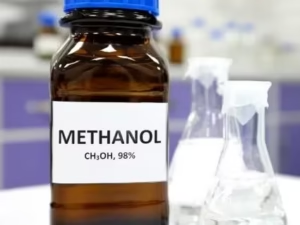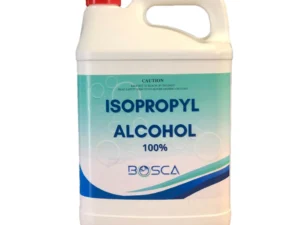Description
Dimethylformamide (DMF): The Versatile Solvent with a Complex Reputation
Dimethylformamide (DMF), often simply referred to as DMF, is a ubiquitous organic solvent widely used in various scientific and industrial applications. Its powerful solvency, miscibility with water and most organic solvents, and relatively high boiling point make it an invaluable tool for chemists and engineers. However, the benefits of DMF come with a complex reputation, as awareness of its potential health hazards has grown in recent years.
What is Dimethylformamide?
DMF is a clear, colorless liquid with a faint odor of ammonia. Its chemical formula is C3H7NO, and it’s an amide derived from formic acid. Technically, it’s the dimethyl derivative of formamide, meaning two hydrogen atoms on the nitrogen atom of formamide have been replaced by methyl groups. This seemingly small structural modification gives DMF its characteristic properties.
Key Properties that Make DMF a Powerful Solvent:
- High Polarity: DMF is a highly polar aprotic solvent, meaning it has a strong dipole moment and cannot donate protons (hydrogen ions). This makes it excellent at dissolving polar compounds like salts, sugars, and polymers.
- Broad Miscibility: DMF is miscible with water, alcohols, ethers, esters, ketones, and aromatic and aliphatic hydrocarbons. This broad miscibility range provides versatility in various applications.
- High Boiling Point: With a boiling point of 153 °C (307 °F), DMF is less volatile than many common solvents, reducing the risk of evaporation and improving the safety of reactions conducted at elevated temperatures.
- Thermal Stability: DMF is relatively stable at elevated temperatures, allowing it to be used in reactions requiring heating.
Applications Across Industries:
DMF’s unique properties make it a valuable solvent in a wide range of industries, including:
- Chemical Synthesis: DMF is extensively used as a solvent for peptide synthesis, polymer chemistry, and various organic reactions. It facilitates reactions by dissolving reactants and promoting the formation of activated complexes.
- Pharmaceutical Industry: DMF is used in the production of pharmaceuticals, particularly in the formulation of drugs and the synthesis of active pharmaceutical ingredients (APIs).
- Polymer Industry: DMF is a good solvent for many polymers, including polyurethanes, polyacrylonitrile, and polyvinyl chloride. It’s used in the production of fibers, films, and coatings.
- Electronics Industry: DMF is used in the manufacture of semiconductors, liquid crystals, and other electronic components.
- Petrochemical Industry: DMF is used as a solvent for extracting butadiene from hydrocarbon streams.
- Laboratory Research: DMF is a common laboratory solvent for various scientific experiments, including spectroscopy, chromatography, and electrochemistry.
The Dark Side: Health and Safety Concerns:
While DMF offers numerous advantages, it’s crucial to acknowledge its potential health hazards. Prolonged or repeated exposure to DMF can have adverse effects on human health, including:
- Liver Damage: DMF is metabolized in the liver, and chronic exposure can lead to liver toxicity and even liver failure.
- Reproductive Toxicity: Studies have suggested that DMF can affect male and female reproductive systems.
- Skin and Eye Irritation: Direct contact with DMF can cause skin and eye irritation.
- Respiratory Issues: Inhalation of DMF vapors can irritate the respiratory tract and cause breathing difficulties.
- Potential Carcinogen: While the evidence is not conclusive, some studies have suggested that DMF may be a potential carcinogen.
Safe Handling and Mitigation Strategies:
Due to the health risks associated with DMF, it is imperative to implement strict safety protocols when handling this solvent. These include:
- Engineering Controls: Use of fume hoods, ventilated work areas, and closed systems to minimize exposure.
- Personal Protective Equipment (PPE): Wearing gloves, safety glasses or goggles, and appropriate respiratory protection when handling DMF.
- Proper Ventilation: Ensuring adequate ventilation to prevent the accumulation of DMF vapors.
- Regular Monitoring: Monitoring air concentrations of DMF to ensure they are within permissible exposure limits.
- Employee Training: Providing comprehensive training to employees on the hazards of DMF and safe handling procedures.
- Substitution: Exploring alternative solvents with less toxicity whenever possible. Some potential replacements include dimethyl sulfoxide (DMSO), N-methyl-2-pyrrolidone (NMP), and ethyl lactate, although their solvency properties may not be identical.
Conclusion:
Dimethylformamide is a powerful and versatile solvent that plays a crucial role in many industries. However, its potential health hazards cannot be ignored. By implementing strict safety protocols and exploring alternative solvents when feasible, we can minimize the risks associated with DMF and ensure the safety of workers and the environment. As research continues to explore safer alternatives, the reliance on DMF may decrease in the future, further mitigating the potential for adverse health effects. The key lies in responsible use, informed decision-making, and a commitment to prioritizing worker safety and environmental protection.

























Reviews
There are no reviews yet.